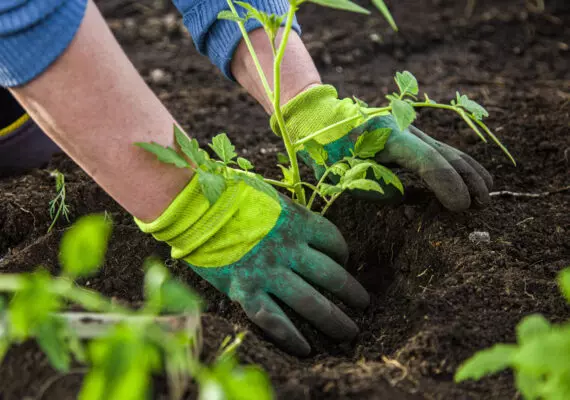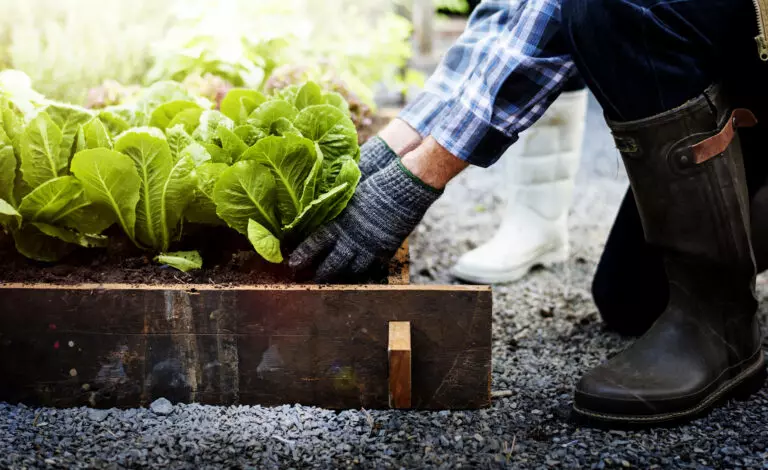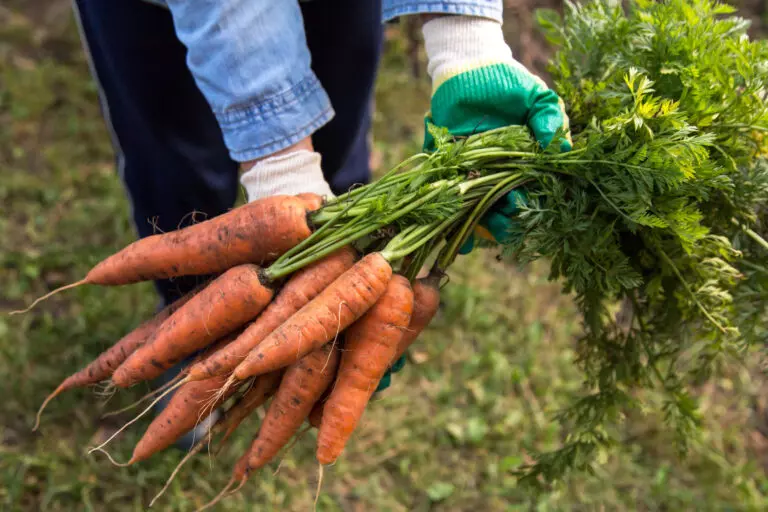
WHAT IS CROP ROTATION?
Crop rotation for vegetables is nothing but planting vegetables from different families in a specified order on the same bed. This improves vegetable yields. They have better growth, and the spread of diseases and pests, which usually attack specific groups of plants, is limited. Crop rotation is a natural way to produce healthy and tasty vegetables. Additionally, it helps eliminate diseases such as onion white rot, cabbage clubroot, root maggots, or stem base rot in legumes.
When the same plant species are grown continuously on one bed, the soil becomes depleted of the nutrients needed by that species. As a result, yields decrease in subsequent years, and pests and diseases characteristic of that plant group appear.
It’s worth remembering because different species may have different nutritional requirements. As a result, they exploit the soil with varying intensity and in different layers. Some plants have shallow root systems and absorb nutrients from the top layer. Others, however, extend their roots deep into the soil, extracting nutrients from its lower levels.
WHAT VEGETABLES TO PLANT AFTER EACH OTHER?
It is best to divide the vegetable garden into four equal parts and plant vegetables according to the principle that vegetables with different nutritional requirements will grow in each designated area. This way, four beds are created:
the first one for plants with high nutritional requirements;
the second one for vegetables with moderate nutritional requirements;
the third one for plants with low nutritional requirements;
the fourth one for species with deep roots intended for green manure.
The principle to follow is that in the following year, on the plot where vegetables with high nutritional requirements were grown, species with moderate nutritional requirements should be planted. In the third year, those with low requirements, and in the fourth, green manure plants. This way, the plot will be prepared for planting species with high nutritional requirements in the following year.
In practice, crop rotation looks like this: in autumn, one part of the field should be fertilized with manure. Vegetables with high nutritional requirements can then be grown on this part, such as:
cabbage group vegetables:
red cabbage;
white cabbage;
Savoy cabbage;
cauliflower;
broccoli;
squash group vegetables:
pumpkins;
zucchinis;
cucumbers;
some solanaceous vegetables:
early potatoes;
dwarf tomato varieties;
selected root vegetables:
celery.
In the next year – the second year after manuring – vegetables with moderate nutritional requirements can be sown and planted on the same cultivated land. These include:
bulb group vegetables (if the soil is less fertile, they can be grown in the first year after manuring):
onion;
leek;
garlic;
root vegetables:
beetroot;
parsley;
late carrots;
solanaceous vegetables:
bell pepper;
tomato;
eggplant;
other group vegetables:
melon;
radish;
Brussels sprouts.
According to the principles of crop rotation, in the third year after manuring, vegetables with low nutritional requirements can be grown on the same plot. These include:
leguminous vegetables (they significantly contribute to improving the quality and fertility of the soil on which they grow):
broad beans;
beans;
peas;
other group vegetables:
early carrots;
annual herbs;
kohlrabi;
radish;
spinach;
lettuce;
dill.
In the fourth year, on the same bed, green manure plants should be sown, which will enrich the soil with nutrients.


AN EXAMPLE OF CULTIVATION IN LINE WITH CROP ROTATION
Let’s analyze an example of cultivation in line with crop rotation.
In autumn, a bed should be fertilized with manure. Then, in spring, celery should be planted on it. Suitable thermal conditions should be selected for it in the plot. If done too quickly, the plant will tend to flower. Celery has a very developed root system that can reach even 1.5 m deep into the soil. In the second year, green manure plants can be planted on the bed. This will increase the amount of nutrients in the soil. Its structure and the amount of humus will also improve. In the third year, the plot should be planted with lettuce. This vegetable has fairly high nutritional requirements, but its root system is not very developed. In the next, fourth year on the bed, leeks can be planted. It has a strong root system that can grow up to 50 cm deep into the soil.
Another example of crop rotation could involve the following cultivation:
Fertilize the bed with manure and plant potatoes on it. These vegetables like slightly acidic soil and fertile substrate. They are an excellent remedy for soil weed control. Thanks to their vigorous growth, they can smother weeds. In the second year, root vegetables can be planted on the bed. They grow well in soil with a weakly alkaline reaction, so if it turns out in autumn, after the potato cultivation, that the soil pH is too acidic, liming will be necessary. In the third year, leguminous vegetables should be planted on the plot. Thanks to their ability to absorb nitrogen from the atmosphere and store it in their roots, they fertilize the soil. It is worth remembering to leave plant residues in the soil after harvesting beans or peas, which will perfectly fertilize the soil for cabbage vegetables that should be planted on the bed in the fourth year of crop rotation.






